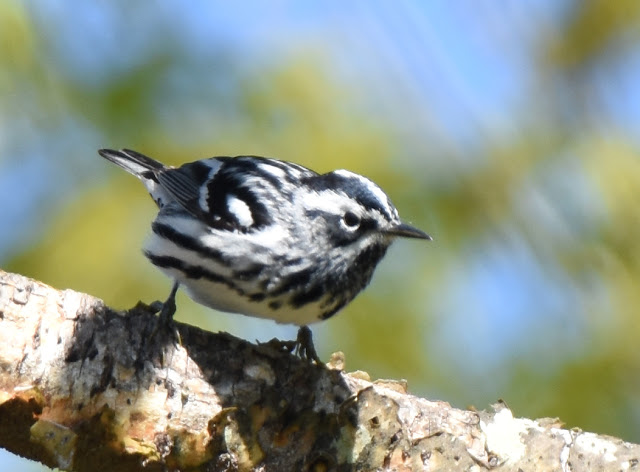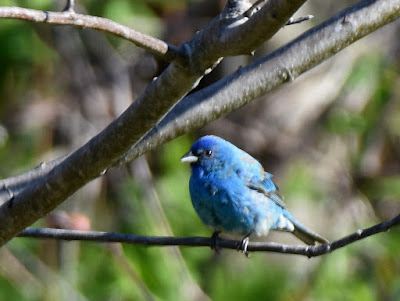To my way of thinking, a good ramble around Halibut Point blends purposeful alertness with mindless abandon. Though it sounds contradictory it just means that different mental compartments need a rest while others take stage, like in highway driving. On these rambles the vigilant compartments are systematically scanning both outer and inner environments, alert to significant patterns of concern or amusement.
And so it was last week that I designated The Warbler Tree among the multitude of red oaks in the Park. I fabricated an idea with both factual and fantastical branches. The story rippled from leafy canopies of observation and imagination. It gathered or omitted features that presented themselves for threading into this particular embroidery of the landscape.
 |
Blackburnian Warbler |
What, for instance, should I do with evocative photos like this of the Blackburnian Warbler spotted in a different red oak tree?
 |
Red-breasted Nuthatch |
Or the photo of the lively masquerader in The Warbler Tree that was not a warbler?
 |
American Goldfinch |
Or a bird with entirely different dietary interests (and bill) from the insectivorous warblers? How much can a good story tell?
At one point in the scenario something large and anomalous foraged through the tree gleaning who knows what among its flowers.
 |
A female Red-winged Blackbird |
It looked and behaved more like a muted Oriole than the mate of the glossy Red-winged Blackbird singing in the cattail marsh.
 |
Warbling Vireo |
Science and adventure introduced a species from the fringes of the Warbler World, a tiny mouse-colored relative with a sturdy vireo bill rather than a pointed little sticker.
 |
Rose-breasted Grosbeak |
Those diverse beaks have everything to do with specialties in finding nourishment in the oak tree.
Their extravagant plumages, on the other hand‒Who can account for those?



























